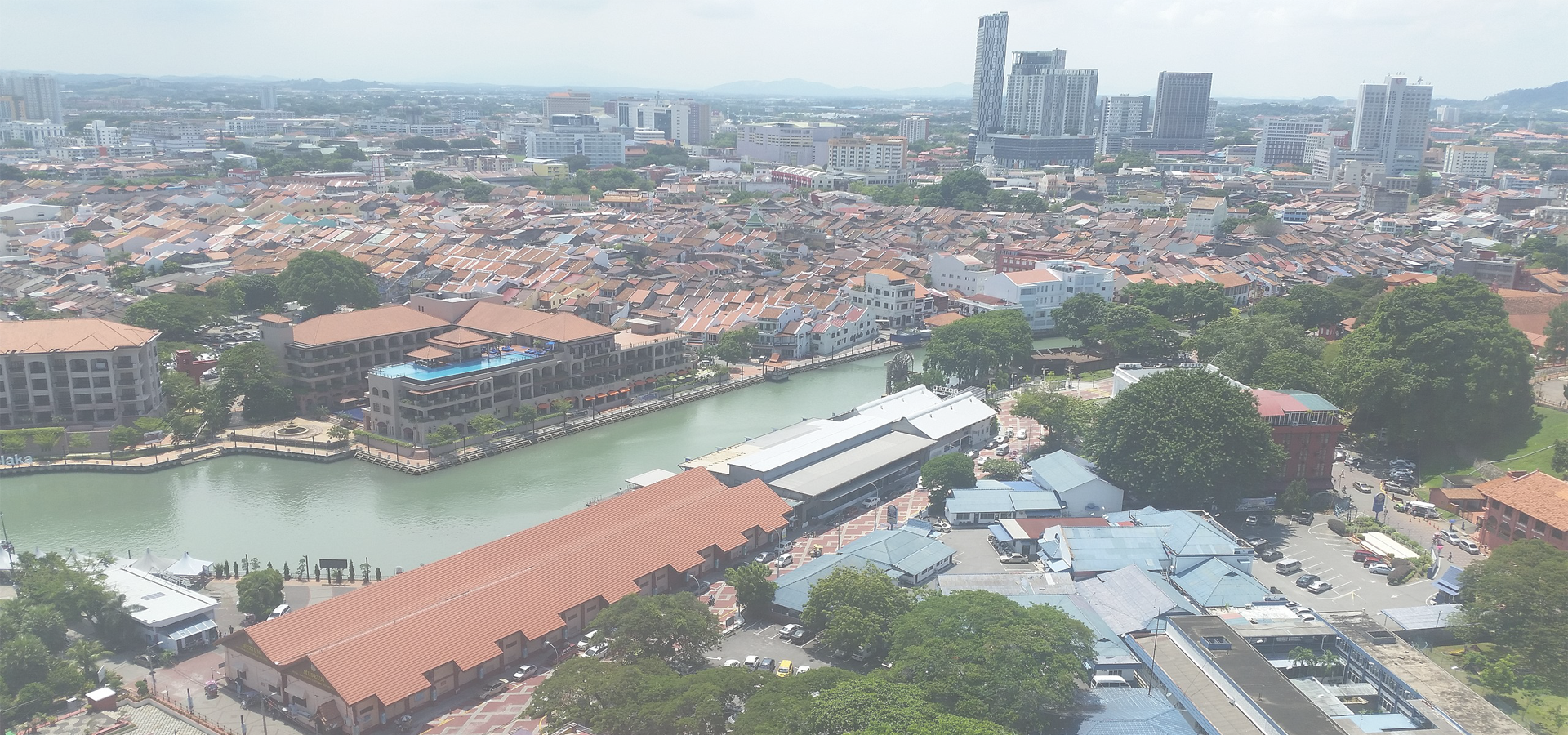Malacca, Malaysia
🇲🇾 Malacca City is the capital city of the Malaysian state of Malacca. Malacca City is one of the cleanest cities in South East Asia, being awarded as National Winner of Asean Clean Tourist City Standard Award 2018-2020 recently. It is the oldest Malaysian city on the Straits of Malacca, having become a successful entrepôt in the era of the Malacca Sultanate. The present-day city was founded by Parameswara, a Sumatran prince who escaped to the Malay Peninsula when Srivijaya fell to the Majapahit. Following the establishment of the Malacca Sultanate, the city drew the attention of traders from the Middle East, South Asia, and East Asia, as well as the Portuguese, who intended to dominate the trade route in Asia. After Malacca was conquered by Portugal, the city became an area of conflict when the sultanates of Aceh and Johor attempted to take control from the Portuguese.
Following a number of wars between these territories, Aceh declined in influence while Johor survived and expanded its influence over territory previously lost to Aceh in Sumatra when Johor co-operated with the Dutch who arrived to establish dominance over Java and Maluku Islands. However, due to royal internal strife between the Malay and Bugis, the Johor-Riau Empire was divided into the sultanates of Johor and Riau-Lingga. This separation became permanent when the British arrived to establish their presence in the Malay Peninsula. The Dutch, who already felt threatened in the presence of the British, began conquering the Riau-Lingga Sultanate along with the rest of Sumatra, while Johor came under British influence following the signing of the Anglo-Dutch Treaty of 1824.
When the British succeeded in extending their influence over the Malay Peninsula, the city soon became an area of development under the Straits Settlements as part of the British Empire. The development and burgeoning prosperity were, however, halted when the Japanese arrived in World War II and occupied the area from 1942 to 1945. During the occupation, many of the city's residents were taken and forced to construct the Death Railway in Burma (present-day Myanmar). After the war, the city was returned to the British and remained as the capital of Malacca. The status as a capital remained until the formation of Malaysia in 1963, and in 2008 it was listed, together with George Town of Penang, as a UNESCO World Heritage Site for its long history.
The economy of Malacca City is largely based on tourism. As the economic centre of the state of Malacca, it also hosts several international conferences and trade fairs. The city is located along the Maritime Silk Road, proposed by China in 2013. Among the tourist attractions in Malacca City are Porta de Santiago, Jonker Walk, Little India, Portuguese Settlement, Stadthuys, Maritime Museum, Christ Church, Malacca Sultanate Palace Museum and Taming Sari Tower.
Economy Since the era of Malacca Sultanate, the city has prospered as a successful entrepôt, putting it in the same position as Venice, Cairo and Canton. When the European conquest begin, Malacca had developed into a cosmopolitan city with a long-standing European heritage. The arrival of Chinese traders and coolie during the sultanate era and European colonisation saw a large boost to the economy, especially during the administration of Dutch and the British. In modern times, the tourism is more dominant than the primary-based industry due to its historical riches with the melting pots of cultural influences which attracted many local and foreign tourists to visiting the city, which also became part of the state economy income. In addition to its strategic location in the maritime Silk Road, the city benefited from the rise of China and India as world economic powers. Malacca City has hosted numerous national, regional and international conferences, congresses and trade fairs in the Malacca International Trade Centre. In early 2016, the Malacca state government has start to develop a new economic development area in the central city centre which will be known as the Hang Tuah Trade Centre that will encompassing trade centres, higher education, hospitality and business.
Malacca, Malaysia

Malacca was ranked #504 by the Nomad List which evaluates and ranks remote work hubs by cost, internet, fun and safety. Malacca has a population of over 579,000 people. Malacca also forms the centre of the wider Malacca state which has a population of over 932,700 people. For the location of Malacca see: Malacca City.
To set up a UBI Lab for Malacca see: https://www.ubilabnetwork.org Twitter: https://twitter.com/UBILabNetwork
🇩🇪 Oder-Spree 2.244
🇲🇾 Alor Gajah 2.383
🇺🇸 Sterling Heights 2.544
🇨🇴 San José del Guaviare 2.572
🇲🇾 Kota Bharu 102.237
🇲🇾 Alor Gajah 102.217
🇲🇾 Negeri Sembilan 102.206
🇱🇦 Luang Prabang 102.142
🇹🇭 Nakhon Ratchasima 102.1
🇹🇭 Chanthaburi 102.1
Locations Near: Malacca 102.248,2.19444
🇲🇾 Malacca City 102.255,2.191 d: 0.9
🇲🇾 Alor Gajah 102.217,2.383 d: 21.3
🇲🇾 Negeri Sembilan 102.206,2.776 d: 64.8
🇲🇾 Seremban 101.933,2.717 d: 67.8
🇲🇾 Batu Pahat 102.933,1.85 d: 85.2
🇲🇾 Salak Tinggi 101.75,2.8 d: 87.1
🇲🇾 Putrajaya 101.719,2.943 d: 101.9
🇲🇾 Cyberjaya 101.65,2.917 d: 104.2
🇲🇾 Kajang 101.772,3.008 d: 104.8
🇲🇾 Teluk Datok 101.519,2.819 d: 106.7
Antipodal to: Malacca -77.752,-2.194
🇪🇨 Riobamba -78.633,-1.667 d: 19900.9
🇪🇨 Tena -77.816,-0.989 d: 19880.9
🇪🇨 Ambato -78.62,-1.24 d: 19871.7
🇪🇨 Guaranda -79,-1.6 d: 19861.4
🇪🇨 Cuenca -78.983,-2.883 d: 19858.3
🇪🇨 Milagro -79.594,-2.129 d: 19810.3
🇪🇨 San Francisco de Milagro -79.594,-2.129 d: 19810.3
🇪🇨 Quevedo -79.45,-1.033 d: 19786.4